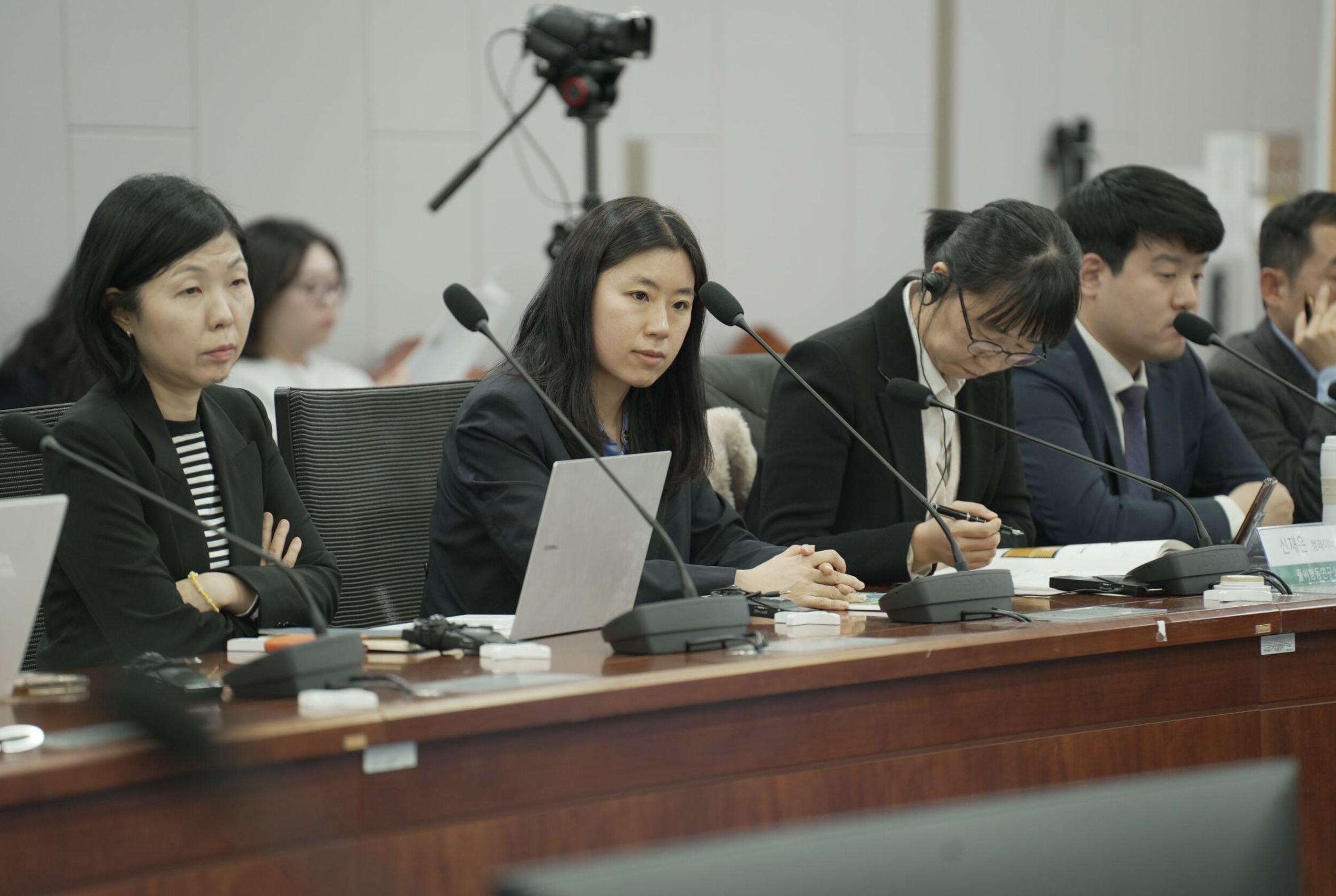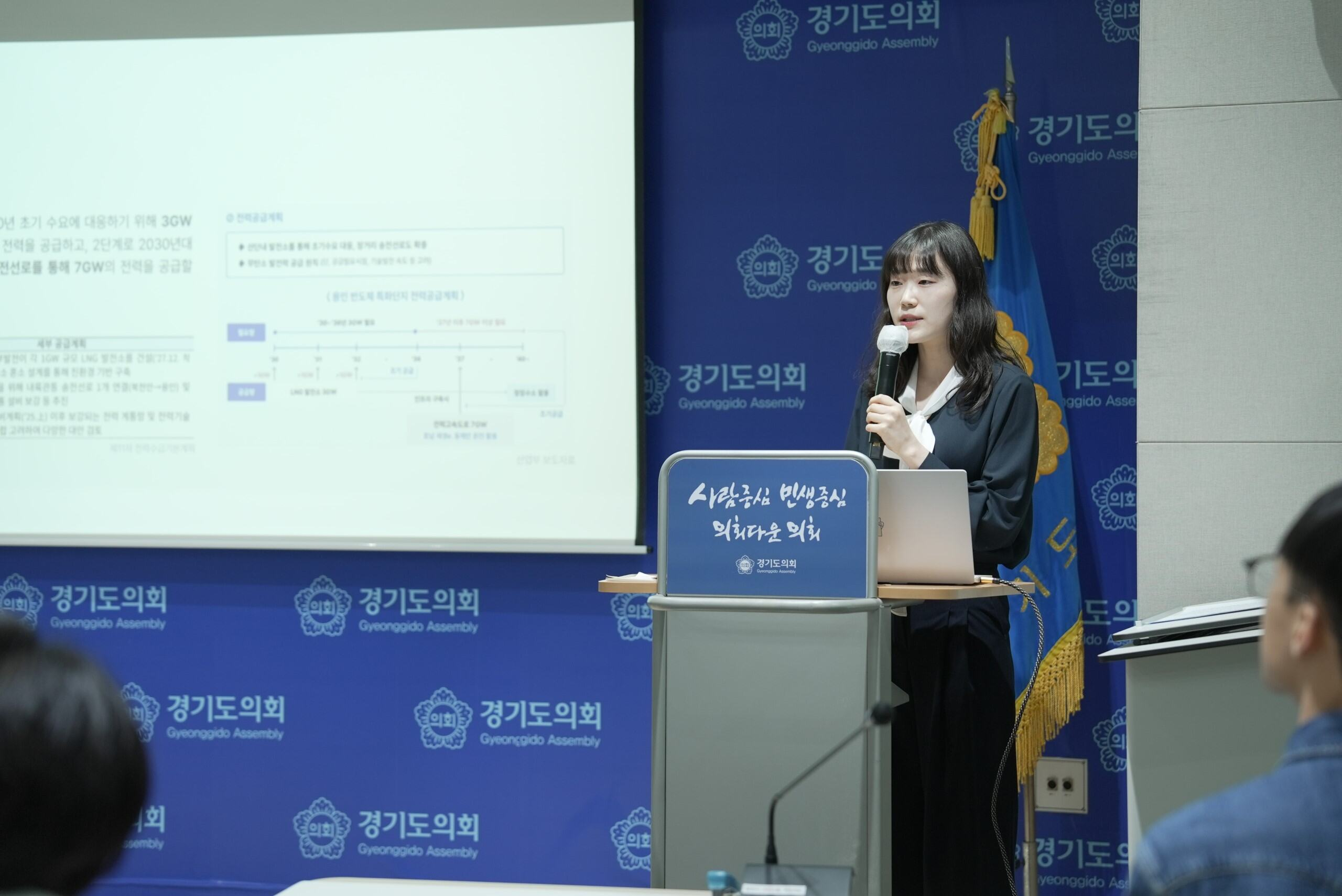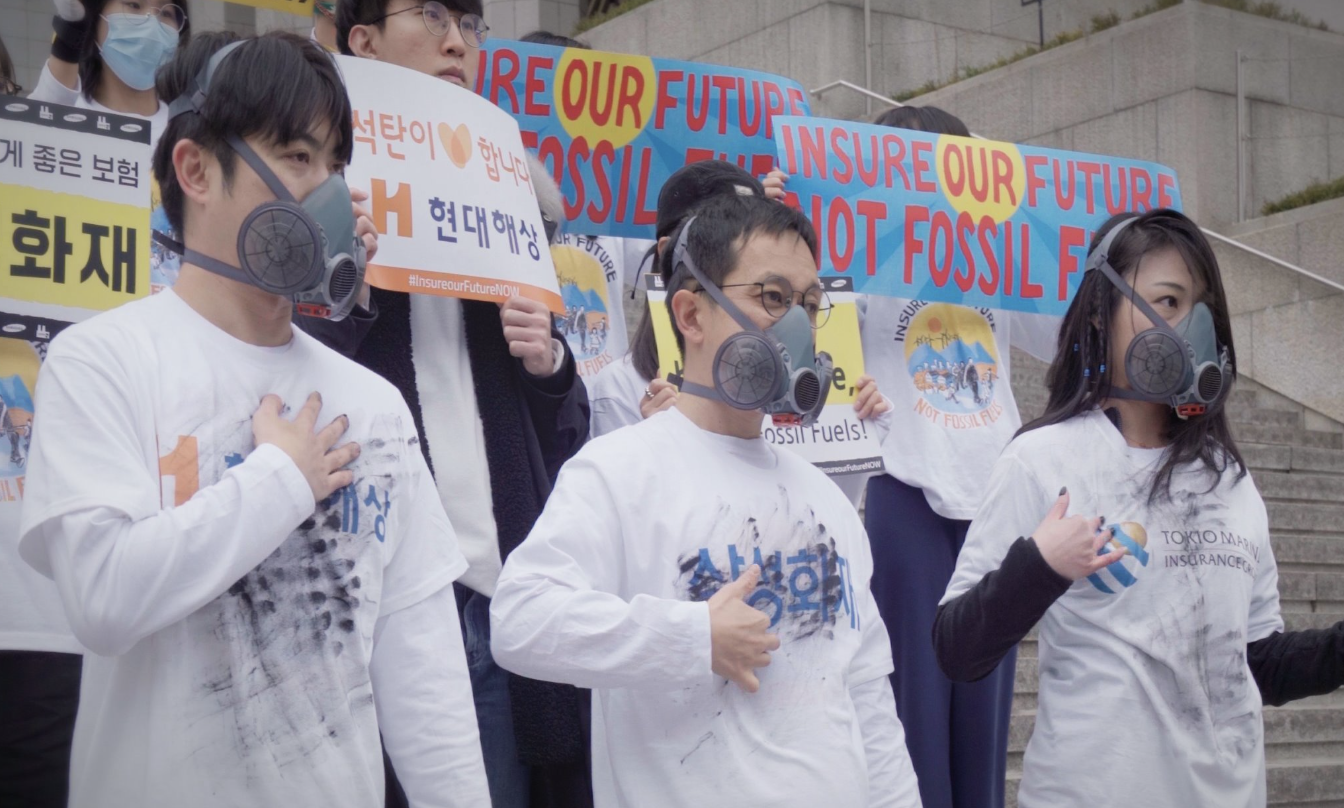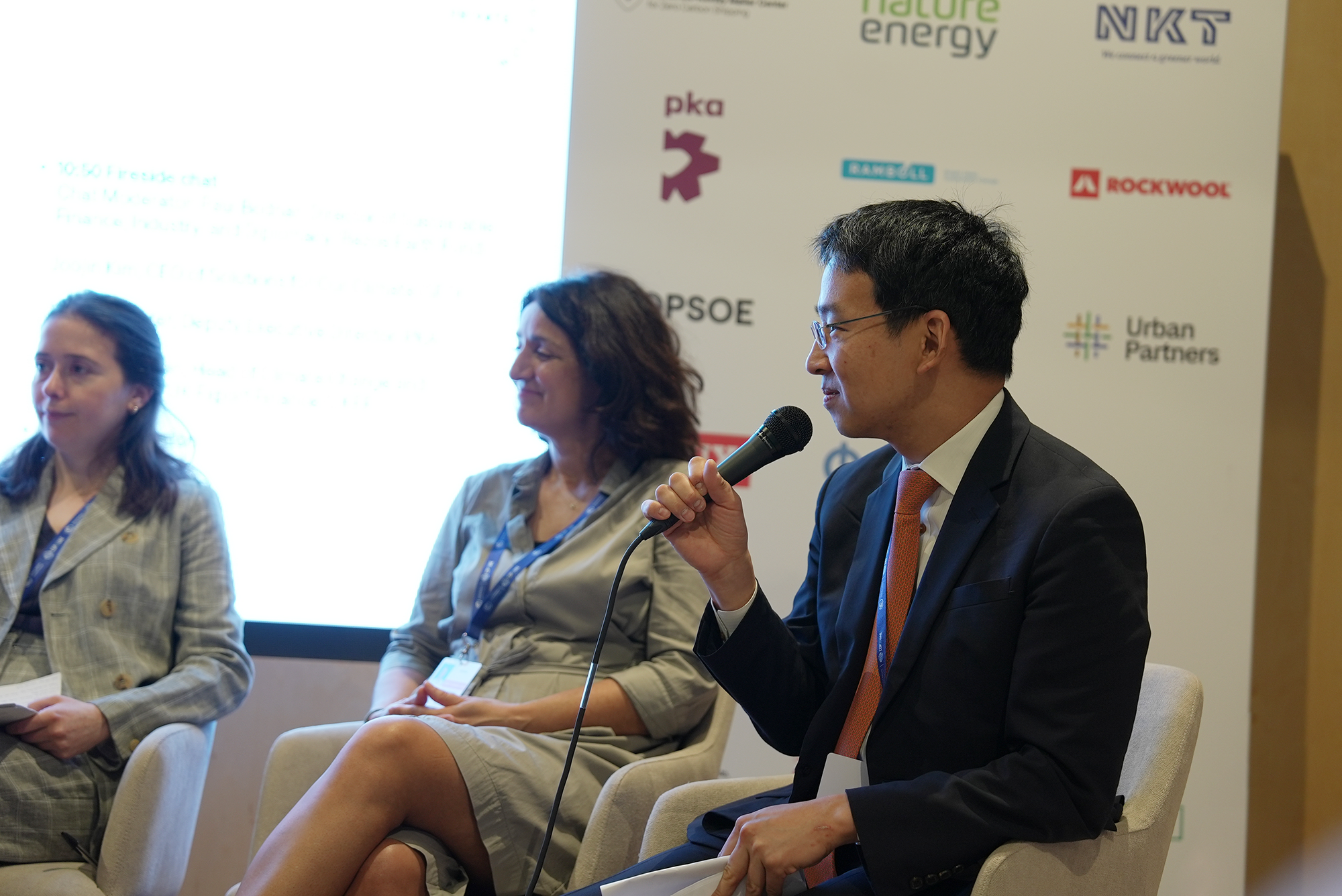
About
This report scrutinizes the outcomes of 10 years of burning biomass in South Korea, which was touted "clean" source of electricity. Our study revealed that, contrary to its green credentials, biomass emits significant levels of carbon dioxide, drives deforestation and forest degradation, and crowds out genuine renewables, such as solar and wind. We lay out a set of policy recommendations calling for an immediate re-evaluation of energy and forestry policies to ensure South Korea meets the climate challenge.
Executive summary
Burning Forests, South Korea’s #2 Renewable Energy
As the world strives to transition away from fossil fuels, many countries are increasingly relying on a “quick fix” to produce clean energy. Much of the developed world is championing biomass-based power—the burning of wood for electricity and heat. Yet, biomass is an intrinsically flawed solution to climate change. Recent findings in climate and forest sciences consistently indicate that burning biomass emits more greenhouse gases (GHGs) than fossil fuels. Deploying biomass on a large scale would lead to devastating land-use changes that result in in far-reaching consequences, including deforestation, biodiversity loss, violating the rights of Indigenous Peoples and local communities, and delayed climate action in meeting the Paris Agreement goals.
South Korea, Asia’s fourth-largest economy and the world’s ninth-biggest carbon-emitting nation, is also enamored with the false solution of biomass. It has become the second-largest source of renewable energy for the country, surpassing wind energy by sixfold. This dramatic rise was a result of a deliberate policy choice by the Ministry of Trade, Industry and Energy (MOTIE) and the Korea Forest Service (KFS).
Over the past decade, biomass power generation has grown by a staggering 42-fold, with the use of both imported and domestically sourced wood pellets increasing by factors of 28 and 15, respectively. In particular, the raiding of domestic forests to feed the biomass industry has increased more than fivefold since the introduction of the heightened policy incentives in 2018. To this date, the industry and government alike have justified such forest loss as “utilizing forest residues.”
The expansion of biomass in South Korea is mainly driven by the Renewable Energy Portfolio Standard (RPS). Under this scheme, high indirect subsidies, known as the Renewable Energy Certificate (REC) weightings, buffeted the profitability of renewable energy sources in the country. Adopted in 2012, these support measures resulted in state-owned coal power plants benefitting from coal and biomass co-firing. The RECs for co-firing were eventually scaled back over the years of controversy, but even great?er weightings are now granted to biomass-only facilities, doubling down the pressure on domestic forests.

Today, South Korea relies 3.9 million metric tons, or 84.2% of all wood pellets, on imports. Over half of these come from a single country, Vietnam. Other top source markets by volume include Russia, Indonesia, Malaysia, and Canada. In South Korea, the top three wood pellet mills process much of the domestically sourced 737 thousand tons yet still plan to add more than 50% capacity by 2026.

In terms of electricity generation, 24 utilities are operating 28 dedicated biomass plants, while an additional 10 are running 42 co-firing units, many of which are managed by private power companies. Furthermore, five more plants are currently in the pipeline, set to increase the existing fleet by more than half by 2026. Without substantial policy revisions, the government’s ongoing support for biomass power is likely to further exacerbate the paradox of burning forests both at home and abroad, all under the pretext of addressing climate change.
Hidden Emissions of Biomass Power in South Korea
Contrary to the myth perpetuated by the industry that biomass is a clean source of energy, biomass power emits more carbon dioxide (CO2) per unit of energy than coal, oil, or gas. These high emissions are attributed to the low calorific value of wood, which makes it an inherently inefficient fuel source.
However, biomass emissions at the point of combustion are accounted for in the Land Use, Land-Use Change, and Forestry (LULUCF) sector, instead of the Energy sector, as per the guidelines from the Intergovernmental Panel on Climate Change (IPCC). This unresolved peculiarity in international carbon accounting creates the misleading impression that biomass is zero-emission energy, despite the IPCC’s clarification that this technicality does not automatically render biomass as carbon-neutral. In practice, the global warming effect of GHGs from biomass is comparable to that of fossil fuels. Burning biomass, in itself, is fuel combustion emitting carbon and cannot be equated to a ‘clean’ or “zero-carbon” source of energy like solar or wind power.
To date, the South Korean government has refused to disclose the CO2 emissions of biomass power in any of the country’s GHG accounts. The public had no access to this critical data to monitor high-emission activities and hold both the government and private sector accountable. This report represents the first comprehensive analysis conducted in South Korea to unveil the hidden emissions of biomass on a national level.

It is estimated that the biomass power fleet in South Korea emitted 11 million tCO2 in 2022. This amount is comparable to half of the country’s Agriculture sector emissions and exceeds all the annual forest carbon sink enhancements the government committed to achieving by 2050. Since more than half of all biomass fuels are imported and not accounted for in South Korea’s GHG accounts, this level of emissions effectively negates the government’s net-zero commitments for the forestry sector.
The research also indicates a threefold increase in emissions since 2015, cumulatively exceeding 60 million tCO2 over the last eight years. It is estimated that burning one ton of biomass fuel results in an average emission of 1.6 tCO2, with the generation of 1 kWh of electricity leading to the release of 1.2 kgCO2. It should be noted that this research investigated only the smokestack emissions, which should be part of the Scope 1 direct emissions of any biomass plant. The entire lifecycle emissions would be even greater if Scope 2 indirect and Scope 3 supply chain emissions are included.

The high GHG emissions of biomass conclusively invalidate the claim that biomass contributes to achieving carbon neutrality. Instead of replacing coal, biomass competes with other types of renewable energy for REC subsidies. Logging activities eventually result in the loss of carbon sequestered in forests, with reforestation efforts often falling short of the amount needed to offset the damage.
Even under an ideal scenario in which deforested areas are promptly reforested, for the new trees to grow and absorb the equivalent of the carbon released takes anywhere between 30 to a 100 years or even longer. During this time, elevated atmospheric GHG concentrations would continue to exacerbate the climate crisis. Biomass depletes the remaining international carbon budget without delivering any mitigation benefits, thereby directly undermining the objectives of all climate initiatives.
Forest Biomass, Major Driver of Forest Loss
Forest biomass, by definition, inherently involves deforestation and forest degradation as it sources the feedstocks from forests. Despite a series of revisions over the years, the REC scheme in South Korea still heavily subsidizes imported biomass. The Regulation to Promote Legal Timber Trade, South Korea’s timber legality scheme, is not designed to ensure the sustainability of imported wood pellets. This regulation merely requires a review of the legal compliance of permits from the producer country via a superficial document check at customs, without any substantial due diligence taking place. As a result, it fails to proactively identify the sustainability and legality risks inherent in the supply chain.
Vietnam, South Korea’s largest wood pellet trader, is considered a high-risk country for illegal timber, as shown in the instances of fake Forest Stewardship Council (FSC) certifications and possessing a general lack of rigor in sustainable sourcing and verification. Despite repeated scandals, South Korean authorities have yet to take action on Southeast Asian pellet supply chains.
Imports of Russian wood pellets have surged by over 500% since the Russian invasion of Ukraine in 2022, when Russian wood was declared “conflict timber” and subjected to sanctions by international forestry certifications and the European Union (EU). Pellets from Indonesia and Canada have also raised mounting criticism for intensive logging of primary and natural forests, yet South Korea has increased imports from both countries.

South Korea’s energy and forestry laws not only allow the use of domestic roundwood outright but actively subsidize it, often falsely classifying it as forest residues. Over the past five years, the influx of roundwood into wood pellet production has increased by more than fivefold. Illicit attempts at disguising high volumes of roundwood biomass as forest residue fuels to receive high REC weightings are widespread.

In terms of forest residues themselves, this research has identified that an average of 87% are harvested through clear-cutting (removing all the trees in an area of forest). Of all the logging licenses that permitted the collection of forest residues for biomass, 40% are exclusively granted for biomass extraction and 22% came back with more residues for fuels than actual harvests, collectively indicating that the primary purpose of logging has shifted to feeding the biomass industry. These findings contradict the KFS claims that only forestry by-products with no other uses are utilized for biomass power. Evidently, forest biomass has become a major cause of forest loss in South Korea.
Subsidized and Outsized Market for Biomass
The fundamental problem with South Korea’s biomass-related legislation and policies is that they fail to consider the numerous adverse climate and environmental impacts. Forest biomass is an expensive energy source, with its electricity cost higher than that of solar or onshore wind. The creation of this industry thus was only possible by the MOTIE’s generous REC weightings, which effectively guarantee corporate profits for deforestation.
These subsidies have created unfair competition with clean renewable energy sources and caused market distortion in the forestry sector. Additionally, the introduction of additional credits for biomass from forest residues, when power plants already receive high legacy weightings, has resulted in an uncontrolled expansion of the overall biomass market. Critics urge the government to abolish REC weightings for biomass power, as the MOTIE is scheduled to update the scheme in the second half of 2024.
The KFS’s Forestry Sector Strategy to Achieve Carbon Neutrality by 2050, finalized in 2021, also builds on from the faulty assumption that all biomass is inherently clean. The Strategy sets a controversial annual production target of 3 million tons of forest residues by 2050, which equates to half of the country’s timber being incinerated as fuelwood, emitting over 93 million tCO2 cumulatively.

In 2022, the Yoon Suk-yeol administration presented its own forest policies, such as the Forest Renaissance Strategy and the 3rd Master Plan for Carbon Sink Improvement yet followed the footsteps of the previous government’s policies. Notably, the overt promotion of forest biomass in these initiatives deviates from the consensus reached through public-private consultations in 2021. These ambitious plans of the KFS in recent years also contradict the MOTIE’s 10th Basic Plan for Long-Term Electricity Supply and Demand, which calls for freezing the bioenergy generation capacity at 2023 levels. To halt deforestation and forest degradation both at home and abroad, there is an urgent need for a thorough overhaul of the premises and directions of energy and forest policies.

Key findings
Biomass power, a false climate solution that burns wood to generate electricity, has surged 42-fold over the past 10 years in South Korea, with the use of imported and domestically sourced wood pellets growing by factors of 28 and 15, respectively.
Biomass for electricity emitted approximately 11 million tCO2 in 2022 alone, which exceeds all the annual forest carbon sink enhancements the government has committed to achieving by 2050, effectively nullifying the government’s net-zero commitments in the forest sector.
South Korea relies 84% of its wood pellet usage on imports, with more than half coming from Vietnam and the rest from Russia, Indonesia, Malaysia, and Canada, whose supply chains are riddled with legality and sustainability risks.
The government plans to increase the use of forest residues for biomass sixfold by 2050, burning more than half of all the domestically harvested wood for energy, which will result in an additional 93 million tCO2 emissions.
As excessive Renewable Energy Certificate (REC) weightings in the country’s Renewable Energy Portfolio (RPS) ensure the profitability of biomass, removing these subsidies would be the most effective way to phase out biomass power.







![[Webinar] International webinar on enhancing due diligence of forest risk commodities' supply chains in Asia](https://content.sfoc.tapahalab.com/images/research/sjGudme.jpg)



![[토론회] 한국형 녹색분류체계(K-Taxonomy), 무엇이 녹색경제활동인가](https://content.sfoc.tapahalab.com/images/research/bn8jdme.jpg)

![[Webinar] Palm Oil based Biofuels Policy and Socio-Environmental Impacts in Asia](https://content.sfoc.tapahalab.com/images/research/BOpldme.jpg)






